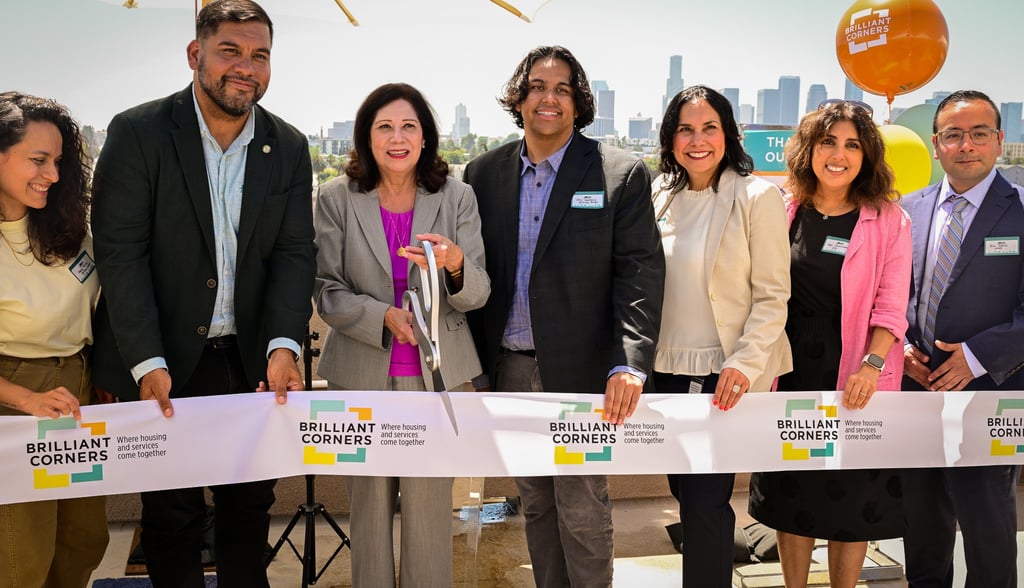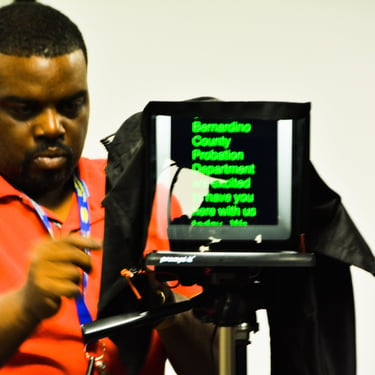
Q&A: Inside the Journey—Bringing LA Residents Inside
A Q&A: Housing for Health's CIIP Team Create New Housing Solutions in Los Angeles County.
NEWS ARTICLE
Thomas Y. Lynch
10/8/20254 min read


Grand Opening of Alvarado & Temple Property, DTLA
The path to securing housing for individuals experiencing homelessness is long and involves numerous assessments and decisions. Successfully opening a new property relies on organized coordination and the execution of a carefully crafted plan. In Los Angeles County, DHS at Housing for Health, this journey is directed by the Capital Improvement Intermediary Program (CIIP), which is essential in managing the construction of important housing and support services for those in need. Before any ribbon is cut, the Housing for Health project managers are already hard at work, playing a crucial role in the planning and implementation of each new property. We spoke with Program Manager Leslie Jordan and Project Manager Deborah Lever, who shared their insights on CIIP and its vital role in supporting residents facing homelessness.




Our Q&A interview:
1. What is the main purpose of the Capital Improvement Intermediary Program (CIIP), and how does it address homelessness in Los Angeles County?
CIIP manages the construction of facilities that expand housing and services for people experiencing homelessness. Housing for Health works closely with Brilliant Corners as the fiscal intermediary and project team to design, build, convert, and renovate spaces that offer a supportive and dignified experience for clients and staff.
Our capital projects are based on trauma informed design principles supporting the social and emotional needs of residents and staff requirements and safety. Included are spaces for indoor and outdoor community gatherings, specialized services such as health screenings and intensive case management. Project types include historical renovations, motel conversions, repurposing buildings for new use and ground-up construction.
2. How does CIIP work with its community-based organizations i.e. Brilliant Corners, and project sponsors to design and develop new housing and service facilities?
Brilliant Corners serves as the fiscal intermediary for CIIP, providing master-leasing, disbursement, and contract oversight services. Non-profit operators are selected based on the quality and expertise of the services they provide. These operators become the project development partners with HFH CIIP.
3. What types of facilities are being built, converted, or renovated through CIIP, and what features make them supportive for people experiencing homelessness?
A wide variety of building types are in the CIIP portfolio, we consider each project through a healthcare lens to promote healing. We have completed IH, PSH, RCC, ODR, and housing for Families. Every facility includes evidence-based design and trauma-informed design principles to create safe, welcoming, and dignified spaces for both residents and staff. Examples of typical facility elements include: a variety of community spaces, computer work stations, sleeping areas with personal locking storage, respite/quite areas, private wellness exam rooms, kitchen and dining areas, laundry, restrooms and showers, offices, case management rooms, conference rooms, outdoor spaces with shaded community spaces, pet areas, and smoking areas, and bike racks.
4. How are the needs and voices of people with lived experience of homelessness included in the planning and design process?
HFH CIIP works closely with the operator/developer engaging with people with lived experience to contribute to the planning of the facility, inside and out.
Our team has extensive knowledge in healthcare design with a deep understanding of operations for facilities serving people experiencing homelessness. We are constantly learning from our colleagues at Housing for Health and the operators.
5. What is the current scope of CIIP’s work—how many projects are underway, and how many individuals will benefit from the new interim housing?
Since the CIIP inception in 2018, 1,771 beds have been created across 23 facilities that include interim, clinically enhanced interim, permanent supportive, and recuperative care housing program models and a day center serving up to 300 people per day. CIIP has an additional 273 beds in the pipeline under development
6. How does CIIP ensure that each project meets both programmatic goals and the unique needs of its residents?
We stay focused on the people that will be living and working in the facility during every phase of the design. This means close collaboration with operators, architects, and contractors from the initial inception to construction completion, to when the doors open to new residents. Each element matters: from a large welcoming community room that encourage social interaction and a sense of belonging to private sleeping rooms with locking storage closets allowing residents to feel safe and respected. Each decision the team makes informs the experience residents and staff will have, and strengthens a successful program.
7. What are the expected long-term impacts of CIIP on homelessness in Los Angeles County, and how can the public stay informed or get involved?
CIIP supports supervisorial districts to encourage community feedback via neighborhood councils and engagement. Personally, we promote volunteering in your neighborhood to support services for people experiencing homelessness and we have gained immeasurable insights through our volunteerism in the past 15 years.
CIIP helps support and create new interim housing, an essential part of the continuum of care, to deliver housing and services to those who are unhoused. As for the long-term impact, an example of just one of the interim housing sites, 346 individuals were served with 93 moving into permanent supportive housing in 2024. CIIP’s completed projects leads to a powerful long-term impact for thousands of vulnerable people.
8. Why do you do this work? (what do you feel when each project is finished)
Housing is healthcare and our passion; this is the work we love and know how to do. With our construction and healthcare design backgrounds, and our expertise with different program models creates successful housing. Even being a small part of the solution to the homeless crises is very humbling and fulfilling. We feel extremely fortunate to have the privilege to do this work for LA County with Housing for Health and building meaningful collaborations with the operators inspires us.
9. How does the program measure success?
Successful completion of a project with multiple stakeholders is the best measure of success. Returning to a fully operational facility, and to see it in action, how the spaces are being used, hearing residents express that they feel respected, hopeful, and safe, and when staff shares how well the spaces work, we gain insights into the success of a project. Most importantly, interim housing is successful when residents choose to stay to receive services.
Thomas Y. Lynch
“How well we communicate is not determined by how well we say things but how well we are understood.”












